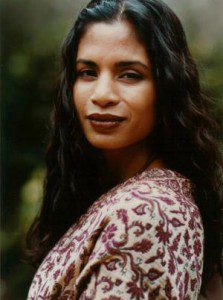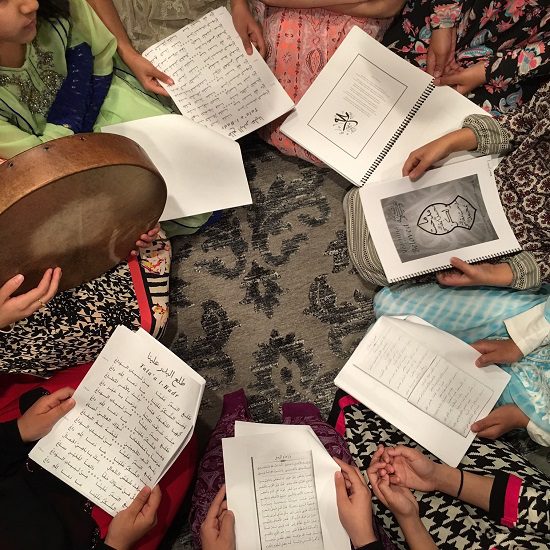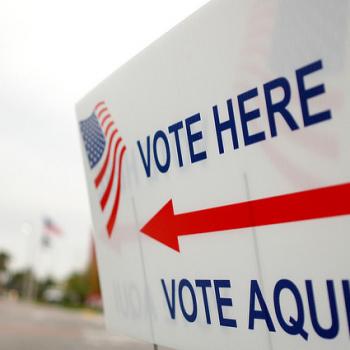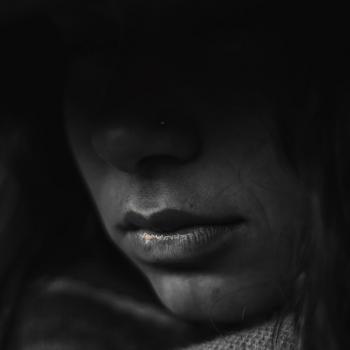By Dilshad D. Ali
Women around the world marked International Women’s Day last Friday a number of ways – some took to Twitter to participate in a conversation about the “Commission on the Status of Women,” discussing how to end violence against women and girls. Others attended luncheons and gala events honoring women change-makers. Many put up positive messages in their social networks about women who have impacted them.
But perhaps one of the most intriguing intersection of International Women’s Day with Muslim Women comes courtesy of the International Museum of Women, which launched its groundbreaking virtual exhibition, “Muslima: Muslim Women’s Arts and Voices.” Curated by Samina Ali, the exhibit features “thought pieces” and artwork from Muslim women around the world, including stunning visual artwork, interviews with activists, architectural presentations (like MIIM Design’s “Sacred Space”) and a fascinating collection of six-word statements.
The exhibit, which will run until December of 2013, highlights the “unique passions and accomplishments of each and every Muslim woman” in order to chip away at a world that’s “grown accustomed to denying the rich diversity of Muslim women’s thoughts and contributions … reducing them into an easy stereotype of an oppressed group,” writes Ali in her “Curator’s Statement.” Altmuslim spoke with Ali about the global reach the online exhibit, how participants encapsulated themselves into six words and what Ali hopes visitors will gain from the exhibit.
Altmuslim: Do you think an online artistic experience can be as impactful as visiting a traditional museum? What is the potential reach of this digital exhibit?
Samina Ali: You could reach so many more people [with a digital exhibit in a virtual museum] — women from all walks of life. I think that one of the most wonderful things is that anyone can access it. With the virtual world, you’ll see that book stores are shutting down. Libraries are losing funding. People are going less and less to plays and museums. So the whole world is changing, and to not recognize that would be daft. This is what the newest generation is accustomed to.
You can visit from a village in India. Or, a woman in India can contribute to the exhibit.
Tell us more about the six-word statements – what can one learn from six words?
The six words statements are called Muslima stories, and one aspect of this global exhibition is that IMOW has teamed up with three other museums in Denmark, Sharja (United Arab Emirates) and the Philippines. Each of us — the four partner museums — decided to recruit young women under the age of 40 who were artists, thought leaders and community organizers, who self-identified as Muslims or were identified as Muslims by others. We are using the word Muslim in the largest, most inclusive way possible.
We gathered 40 Muslim women from these four areas, which we refer to as the Muslima ambassadors, and wanted to do some art project together, something that really brought everyone together.
At first we thought we would do an art project, but not every participant was a visual artist. Language was an issue as well. Finally, we came up with the idea to have all the women write six words to the question – what does it mean to you to be a Muslim woman today? That way we were able to cross the artistic boundaries — it was an inclusive multimedia project. All the women were also photographed holding objects of what it meant for them to be a Muslim. They were also given the opportunity to provide a background story if they wanted.
What are your six words?
If you give me four hours, I can come up with them! Funny story — one Muslima came up with “pray, pray, pray, pray, pray, wine,” representing the five daily prayers for Muslims as well as a dose of reality. This six-word project is open to all Muslimas around the world. You can submit your six words on the website.
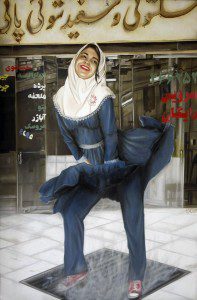
What are some of your favorite pieces in this exhibit?
I’m in love with all of the women I interviewed. They are women reformers who are changing their Muslim communities from within. And, they’re doing it at a very high cost to their personal safety. Dr. Shirin Ebadi, Maria Bashir, Fahima Hashim — Bashir is trying to educate women in Afghanistan to know their rights. Because of it, the city where she is the prosecutor general has the highest rate of women filing police cases for violence against women. It’s because she has given them the courage to ask for their rights.
Hashim in Sudan is trying to change the rape laws because rape is being used in Dafur as an act of terror, and women can’t do anything about it. Dr. Shirin Ebadi’s Nobel Peace Prize medal was taken from her in Iran. These stories stay with you again and again.
Of the reformers that I’ve highlighted, one of the things that they have in common is that they say, “I love my faith. And the way to prove that I love my faith is to reform my community from within.
What do you want people to take away from the exhibit?
Because it’s a global exhibition, my hope is different things for different countries. In terms of America, I hope this exhibition will truly mark a significant step toward breaking stereotypes. I hope it represents the diversity of Muslim women precisely because it’s comprised of the work of Muslim women. I’m tired of people standing on soap boxes saying “Muslim women believe this …. Muslim women are …”
Listen to Muslim women. Listen to their passions. Listen to the realities of what being a woman today means. Being Muslim is just one aspect of a woman’s personality. They are leaders, they are CEOs, and they are broadcast journalists. They are mothers, wives, sisters.
The reason we wanted to highlight the Muslim part of woman’s personality is because that is what’s problematized in the media. That aspect is picked on, and I heard this from so many of the women I was talking to. And, what we mustn’t forget is that aspect isn’t just picked on by the western media, it is picked on by fellow Muslims.
Women are constantly judged — by what she’s wearing, how she’s raising her kids — surface details that have nothing to with the real content of her character and her relationship between her and her God.
What do we need to reform the way the world views Muslim women, and how do we do that?
There are so many different points of view. Zainah Anwar would say that the best way to reform is to change the laws systematically in Malaysia. Shirin Ebadi may say to reform thing s in Iran — the most powerful feminist movement is happening in Iran. It really depends on where you are. If you are in Afghanistan, reform would mean physical things.
Reform is related to how we all feel and what our different realities are. The definition of who is Muslim needs to be expanded; we need to be much more inclusive. The Shia-Sunni fighting that is happening — why must it be so? Why cannot we be inclusive?

